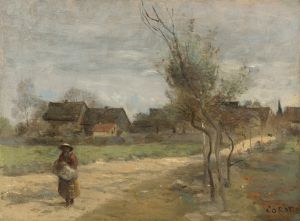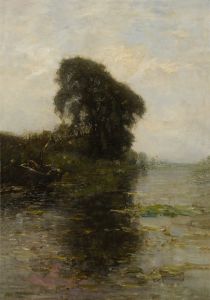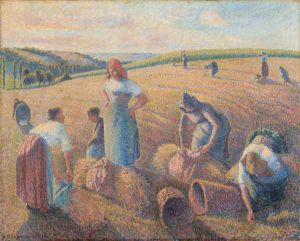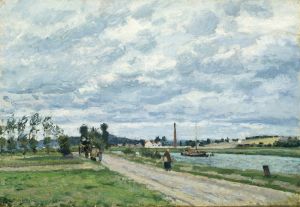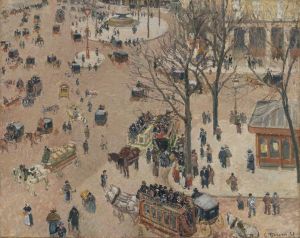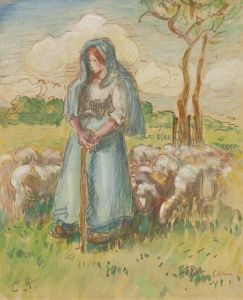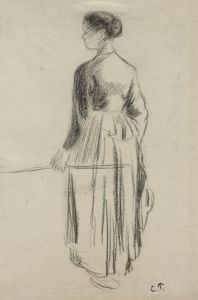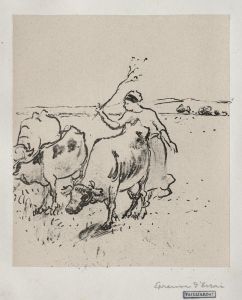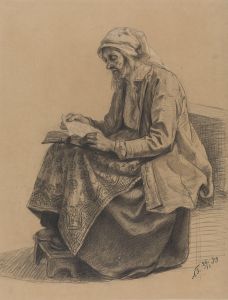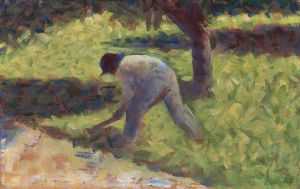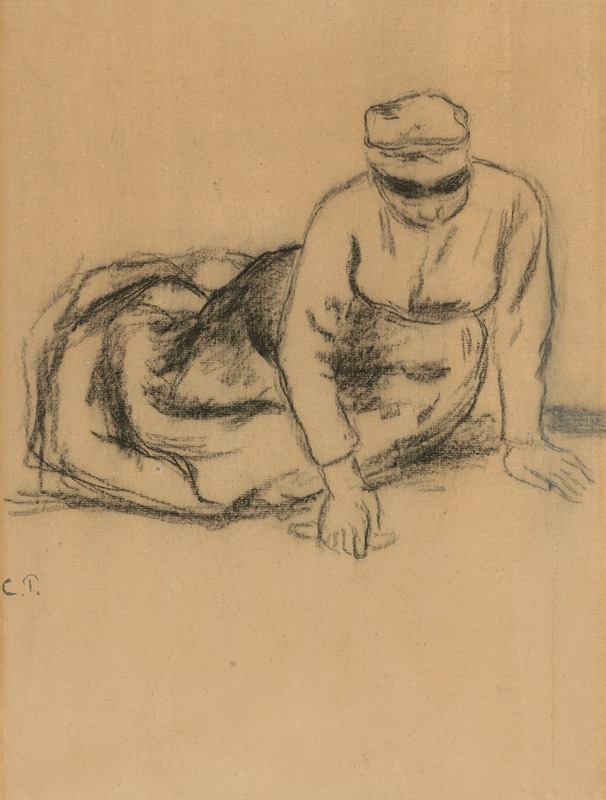
Paysanne assise
A hand-painted replica of Camille Pissarro’s masterpiece Paysanne assise, meticulously crafted by professional artists to capture the true essence of the original. Each piece is created with museum-quality canvas and rare mineral pigments, carefully painted by experienced artists with delicate brushstrokes and rich, layered colors to perfectly recreate the texture of the original artwork. Unlike machine-printed reproductions, this hand-painted version brings the painting to life, infused with the artist’s emotions and skill in every stroke. Whether for personal collection or home decoration, it instantly elevates the artistic atmosphere of any space.
Camille Pissarro, a pivotal figure in the Impressionist movement, created the artwork "Paysanne assise" during a period when he was deeply engaged in exploring rural themes and the lives of peasants. Pissarro, born on July 10, 1830, in the Danish West Indies, moved to Paris in 1855, where he became a central figure in the Impressionist circle. His work is renowned for its focus on rural settings and the everyday lives of the people within them, reflecting his anarchist beliefs and his commitment to portraying the dignity of the working class.
"Paysanne assise," which translates to "Seated Peasant Woman," is a testament to Pissarro's dedication to capturing the essence of rural life. The painting depicts a peasant woman seated, likely taking a moment of rest from her laborious daily tasks. Pissarro's choice of subject matter aligns with his broader artistic focus on the rural proletariat, a theme that he revisited throughout his career. His works often highlight the simplicity and authenticity of peasant life, contrasting with the urbanization and industrialization of the time.
Pissarro's technique in "Paysanne assise" is characteristic of his Impressionist style, which emphasizes light, color, and loose brushwork. The painting likely employs a palette of earthy tones, reflecting the natural environment and the subject's connection to the land. Pissarro was known for his ability to capture the subtleties of light and atmosphere, and this piece would be no exception, showcasing his skill in rendering the nuances of natural light as it interacts with the subject and her surroundings.
Throughout his career, Pissarro was influenced by and collaborated with other prominent Impressionists, including Claude Monet, Edgar Degas, and Paul Cézanne. His interactions with these artists enriched his approach and contributed to the development of his unique style. Pissarro's commitment to plein air painting, or painting outdoors, allowed him to observe and depict the changing qualities of light and weather, which is evident in the atmospheric qualities of his works.
"Paysanne assise" fits within Pissarro's broader oeuvre, which often focused on themes of rural labor and the natural world. His paintings are celebrated for their empathetic portrayal of peasant life, capturing both the hardships and the quiet dignity of his subjects. Pissarro's work provides a window into the socio-economic conditions of the time, reflecting his interest in social justice and his desire to elevate the status of the rural working class through art.
Camille Pissarro's contributions to the Impressionist movement were significant, and his works continue to be studied and admired for their innovative approach to color, light, and subject matter. "Paysanne assise" exemplifies his artistic philosophy and his dedication to portraying the beauty and resilience of rural life. Through his art, Pissarro not only documented the world around him but also offered a commentary on the social issues of his time, making his work both aesthetically pleasing and intellectually engaging.






